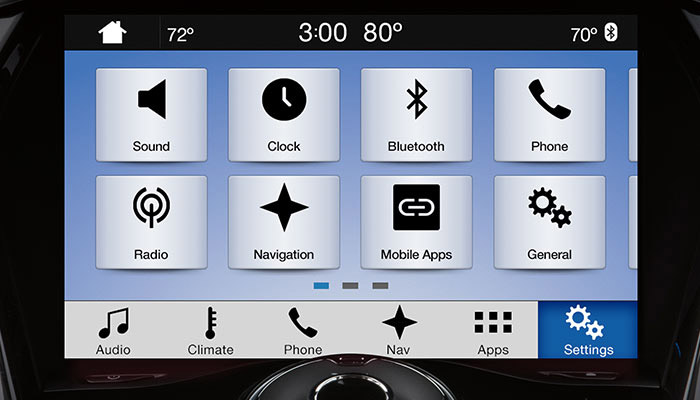How does Google (Nasdaq:GOOG) make money? No less an authority than the company's CEO posed the question, hopefully rhetorically, in a recent letter to shareholders.
Or as the company's annual report succinctly puts it, "We generate revenue primarily by delivering relevant, cost-effective online advertising."
There was a time, not that long ago, when Northern Light and Ask Jeeves were the default search engines of choice for many people. But within a couple years of its 1998 incorporation, Google went from a burgeoning upstart company to verb status - almost a genericized trademark. How did this happen?
In a word, AdWords. In some respects Google is essentially the world's largest bus shelter, deriving 96% of its revenues from ads. That's what separated a nascent early-2000s Google, known primarily as a search engine, from its competitors. Google's founders realized that if people were going to visit the site and enter a term in the search box, they wouldn't be landing on the subsequent page by accident. Thus they'd be motivated to buy a product from any advertiser sharp enough to place an ad there.
How Google Profits Off YouSay you run a small company - a bakery located in Topeka, Kansas, for instance. It's safe to say that people who would Google the words "Topeka" + "bakery" would likely patronize your business. Buy an ad on a page that'd be visited only by people who are looking for a Topeka bakery, and you're targeting about as accurately as it's possible to target a potential clientele.
From a Google customer's perspective (defining a customer in the traditional sense, as someone who gives the company money in exchange for its service), this is a proposition with little risk. AdWords typically operates on a cost per click basis, meaning that an advertiser can place an ad with zero obligation. If no one clicks on the ad, the customer doesn't pay a dime.
A Revolutionary Business Model
The traditional advertising media - radio, television, newspapers et al. - were and are incapable of drawing a distinction between patrons looking to generate traffic, and those looking to make the public aware of their brand. A static general-purpose ad can't tell who's actively in the market for whatever product it's selling, and who's just passively sitting there. To accommodate the latter - people who aren't ready to buy, but who might otherwise keep your competitors top-of-mind - Google lets you pay per impression. That means that the moment a Google user accesses a page on which an ad appears, Google charges the company that placed the ad. Which also literally doesn't cost a dime, but that's a function of the small amounts involved. A typical such agreement allows several views of your ad for less than a penny.
Or as the company's annual report succinctly puts it, "We generate revenue primarily by delivering relevant, cost-effective online advertising."
There was a time, not that long ago, when Northern Light and Ask Jeeves were the default search engines of choice for many people. But within a couple years of its 1998 incorporation, Google went from a burgeoning upstart company to verb status - almost a genericized trademark. How did this happen?
In a word, AdWords. In some respects Google is essentially the world's largest bus shelter, deriving 96% of its revenues from ads. That's what separated a nascent early-2000s Google, known primarily as a search engine, from its competitors. Google's founders realized that if people were going to visit the site and enter a term in the search box, they wouldn't be landing on the subsequent page by accident. Thus they'd be motivated to buy a product from any advertiser sharp enough to place an ad there.
How Google Profits Off YouSay you run a small company - a bakery located in Topeka, Kansas, for instance. It's safe to say that people who would Google the words "Topeka" + "bakery" would likely patronize your business. Buy an ad on a page that'd be visited only by people who are looking for a Topeka bakery, and you're targeting about as accurately as it's possible to target a potential clientele.
From a Google customer's perspective (defining a customer in the traditional sense, as someone who gives the company money in exchange for its service), this is a proposition with little risk. AdWords typically operates on a cost per click basis, meaning that an advertiser can place an ad with zero obligation. If no one clicks on the ad, the customer doesn't pay a dime.
A Revolutionary Business Model
The traditional advertising media - radio, television, newspapers et al. - were and are incapable of drawing a distinction between patrons looking to generate traffic, and those looking to make the public aware of their brand. A static general-purpose ad can't tell who's actively in the market for whatever product it's selling, and who's just passively sitting there. To accommodate the latter - people who aren't ready to buy, but who might otherwise keep your competitors top-of-mind - Google lets you pay per impression. That means that the moment a Google user accesses a page on which an ad appears, Google charges the company that placed the ad. Which also literally doesn't cost a dime, but that's a function of the small amounts involved. A typical such agreement allows several views of your ad for less than a penny.
From the perspective of Google's shareholders, it gets even better. This is all based via auction. Would-be buyers of AdWords bid for the right to use a particular ad, or phrase. Overpay, and Google enjoys a high markup. Underbid, and you risk losing the auction to a more motivated seller.
But Wait, There's More
But AdWords is only one prong of Google's dual revenue strategy. A related and similarly named but different service is AdSense.
Rather than having ads appear on search pages accessed upon visiting Google.com, AdSense allows owners of other websites to join Google's network and run Google-branded ads. Google's algorithms do all the work, too. Sign up for the network and your website devoted to Bikram yoga might end up running ads for mats, props, etc. Companies that pay Google to run those ads indirectly benefit site owners who use AdSense.
According to Google's income statement, about 70% of its advertising revenues come from AdWords, the rest from AdSense.
What makes Google's success so remarkable is that so much of this is accomplished without contracts. The company derives almost all of its revenue on at at-will basis. As Google's own annual report states, "Our advertisers can generally terminate their contracts with us at any time."
While 96% of Google's revenue comes from advertising, the company is so big that that still leaves $1.5 billion unaccounted for. Again, quoting Google's annual report, "[Google] derive[s] most of [its] additional revenues from [its] enterprise products, as well as [its] display advertising management services to advertisers, ad agencies and publishers." Google might have started off (and be primarily identified) as exclusively about search, but its size has allowed it to aggressively buy up companies that stray from the advertising-heavy business model. Google's largest purchase was its 2011 purchase of Motorola Mobility, maker of phones and holder of various valuable patents. Products Motorola Mobility manufactures include the Droid RAZR, Droid Z and various other phones and tablets.
The Bottom Line
Every other service Google offers - from Maps to Earth to Gmail to Docs to Drive - exists to further the primary business. Those services were expensive to create and require great resources to maintain, but for the result - having users spend more time on Google and thus perpetuate reading and clicking on Google ads - it's money well spent.
At the time of writing, Greg McFarlane did not own any shares in any company mentioned in this article.
But Wait, There's More
But AdWords is only one prong of Google's dual revenue strategy. A related and similarly named but different service is AdSense.
Rather than having ads appear on search pages accessed upon visiting Google.com, AdSense allows owners of other websites to join Google's network and run Google-branded ads. Google's algorithms do all the work, too. Sign up for the network and your website devoted to Bikram yoga might end up running ads for mats, props, etc. Companies that pay Google to run those ads indirectly benefit site owners who use AdSense.
According to Google's income statement, about 70% of its advertising revenues come from AdWords, the rest from AdSense.
What makes Google's success so remarkable is that so much of this is accomplished without contracts. The company derives almost all of its revenue on at at-will basis. As Google's own annual report states, "Our advertisers can generally terminate their contracts with us at any time."
While 96% of Google's revenue comes from advertising, the company is so big that that still leaves $1.5 billion unaccounted for. Again, quoting Google's annual report, "[Google] derive[s] most of [its] additional revenues from [its] enterprise products, as well as [its] display advertising management services to advertisers, ad agencies and publishers." Google might have started off (and be primarily identified) as exclusively about search, but its size has allowed it to aggressively buy up companies that stray from the advertising-heavy business model. Google's largest purchase was its 2011 purchase of Motorola Mobility, maker of phones and holder of various valuable patents. Products Motorola Mobility manufactures include the Droid RAZR, Droid Z and various other phones and tablets.
The Bottom Line
Every other service Google offers - from Maps to Earth to Gmail to Docs to Drive - exists to further the primary business. Those services were expensive to create and require great resources to maintain, but for the result - having users spend more time on Google and thus perpetuate reading and clicking on Google ads - it's money well spent.
At the time of writing, Greg McFarlane did not own any shares in any company mentioned in this article.















No comments:
Post a Comment